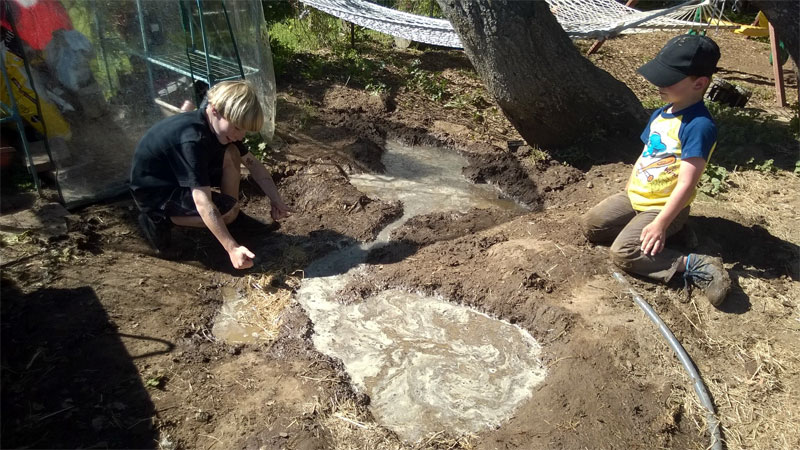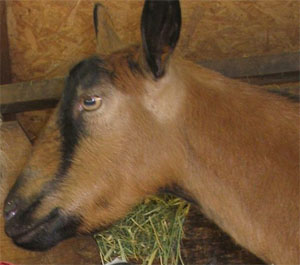

{photos from Little Garden Patch Farm)
Send children outside:
Nature is the best training ground for STEM careers
August 23, 2015 12:00 AM
By Marijke Hecht
Outdoor environmental education cultivates curiosity and discovery in children, the fundamental building blocks of STEM (science, technology, engineering and math) literacy, and it encourages students to make science a part of everyday life.
The need to prepare students for STEM jobs is a regular refrain at education and business forums around the region and across the country. According to the National Math and Science Initiative, “STEM job creation over the next 10 years will outpace non-STEM jobs significantly, growing 17 percent, as compared to 9.8 percent for non-STEM positions.”
STEM educational programs build inquiry skills, foster creativity and prepare students for the kind of flexible and strategic thinking that will be needed for the highly technical 21st century jobs that are emerging. Many of these future jobs will involve new and, perhaps as yet unimagined, advanced technologies.
The foundation for the type of creative and innovative thinking that these jobs will require can be found — literally — right outside.
Nature study, environmental education, outdoor experiential learning. It comes by many names, but when curriculum is well-planned, study that takes children out of the classroom and into the field — and woods and streams — provides the core experiences and skills that they will need to succeed in an ever-changing world.
Consider that engineering, from software development to biomedical applications, requires all of the following underlying skills: an ability to recognize and interpret patterns; the synthetic thinking that allows one to identify relationships and systemic connections; the discipline to solve a problem that matters to you and the world.
Learning out of doors, with nature as a guide, provides ample opportunity for all of these skills.
Many inventions owe their origins to examples in nature, such as the now-ubiquitous Velcro, which mimics the hooks found on several types of seeds, including the common burdock. But even beyond direct inspiration from nature, environmental education offers students the opportunity to make keen observations, develop hypotheses and then begin to ask deep questions about how systems function.
Consider a typical experience in one of the Pittsburgh Parks Conservancy’s environmental education programs that use our city parks as classrooms. Middle school students participating in the Mission Ground Truth program go to Frick Park to learn about the health of a local watershed. The unit begins with teacher training and includes multiple sessions, both in the classroom and in the park. Using tools and sampling methods used by scientists, students collect data, from stream pH to tree diameter, to gain a deeper understanding of forest and stream ecosystems.
Students analyze their data to link ecosystem health to natural and human impacts. And they use sensing tools such as GigaPan and Google Earth to make predictions about park and watershed health. Program content relates to Pennsylvania state standards in environment and ecology; science, technology and engineering; and geography.

And it’s fun.
Why does fun matter? Because when our students are engaged in the experience, they will ask deeper questions and remember content better. As one student recently said when asked about how learning outdoors is different from learning in a classroom: “You can actually see the stuff instead of looking at pictures.”
Outdoor environmental education has been shown to promote complex thinking and increased academic achievement, not just in science but also in other core subjects.
It can spark interest in learning among students who are less motivated in the traditional classroom setting. It exposes students to STEM careers and workforce training, and it helps them make connections between their local environment and larger global issues, such as climate change and habitat loss.
While there is a set curriculum, outdoor environmental education also offers ample opportunities to follow the students’ lead. In a program evaluation of Mission Ground Truth, a teacher expressed appreciation for how Parks Conservancy educators “let the lesson take a different path because of student interest in other topics.” As a result we see students coming back to the classroom excited about their experience and fired up to learn more.
If we are going to meet the demands of an ever-more technological future, we need to make sure that our children are spending ample time outdoors learning, playing and growing. And we need to equip our schools and our teachers with the knowledge, resource tools and freedom to incorporate hands-on, outdoor study as part of their science curricula.
Marijke Hecht (mhecht@pittsburghparks.org) is director of education at the Pittsburgh Parks Conservancy and project manager for the construction of the new Frick Environmental Center in Frick Park, scheduled for completion in 2016.
This article originally appeared on

|

